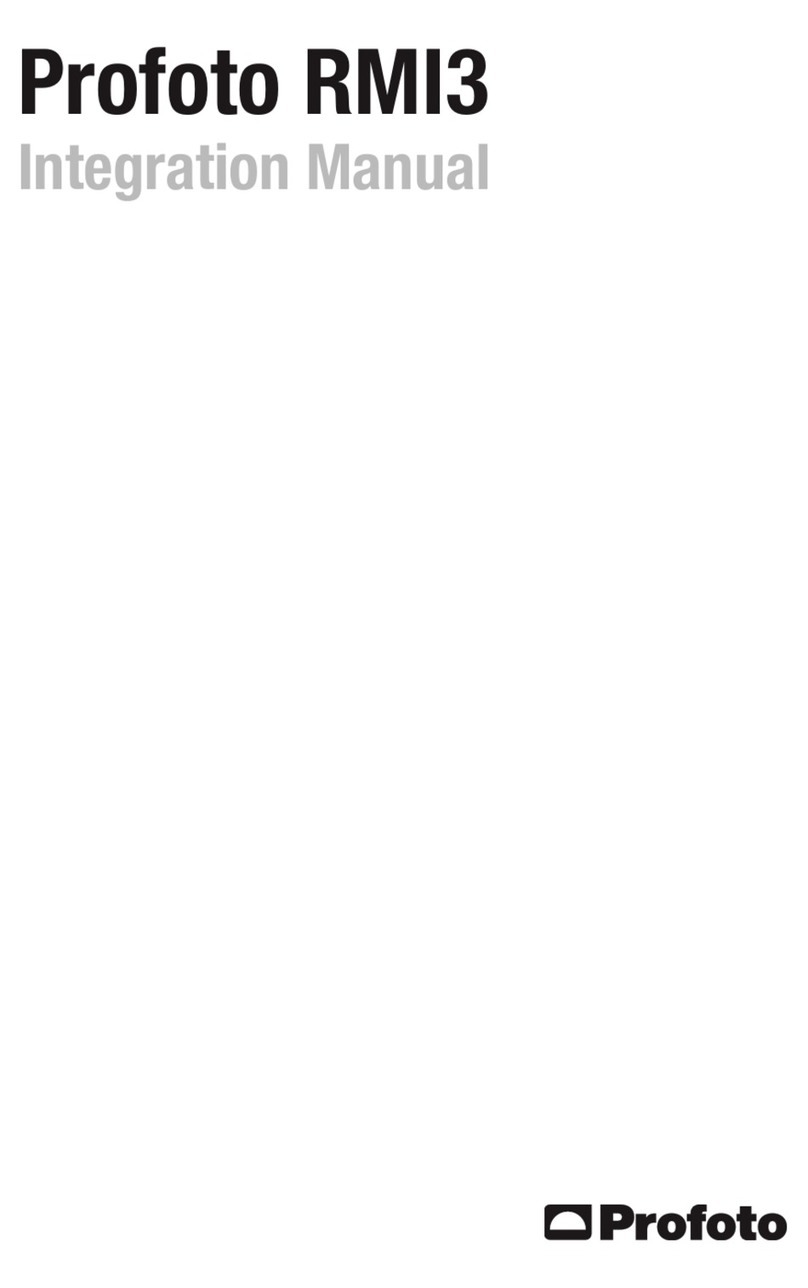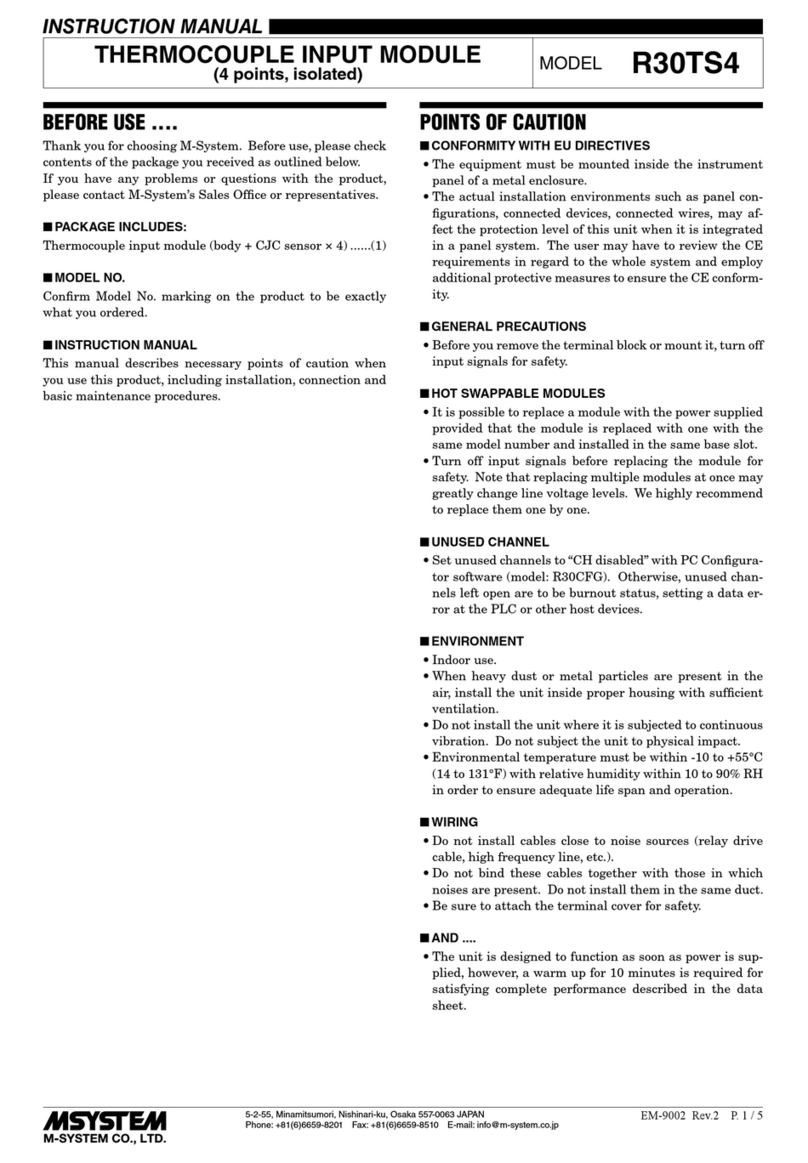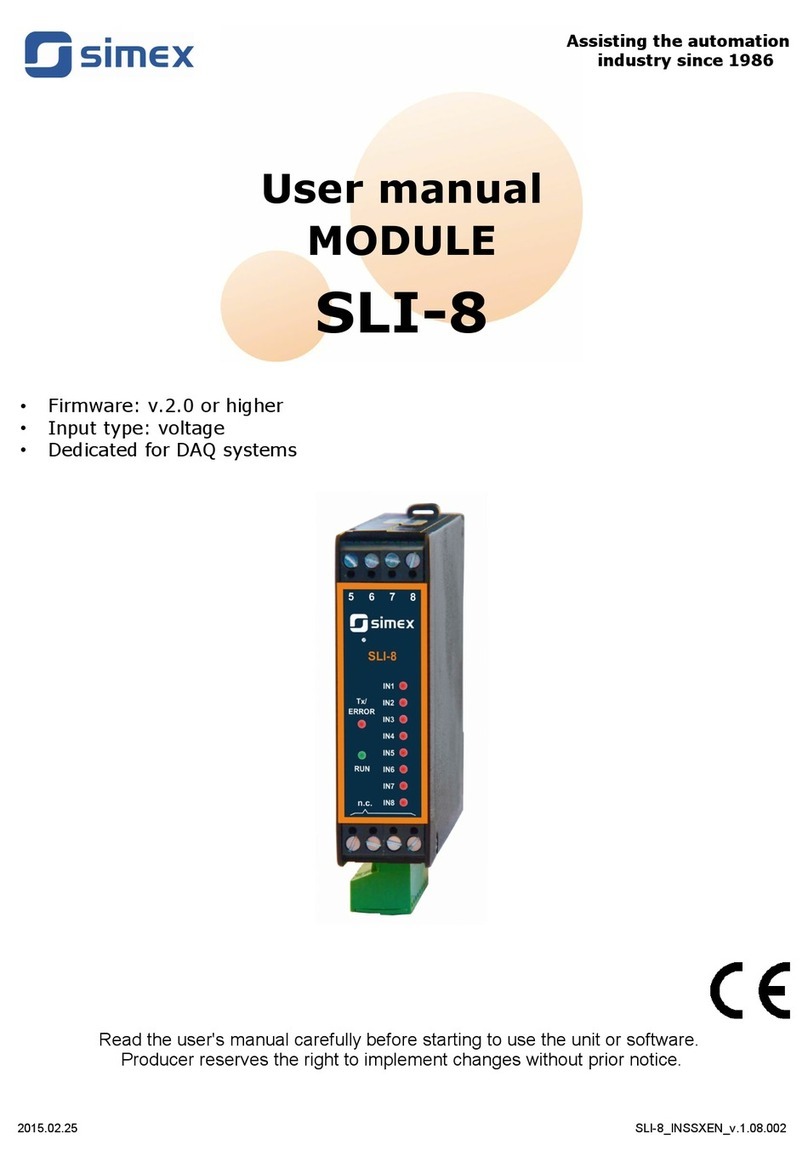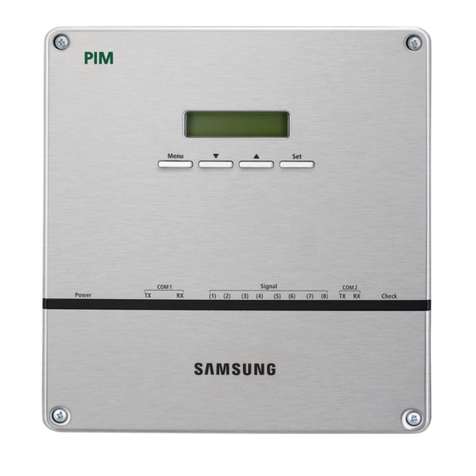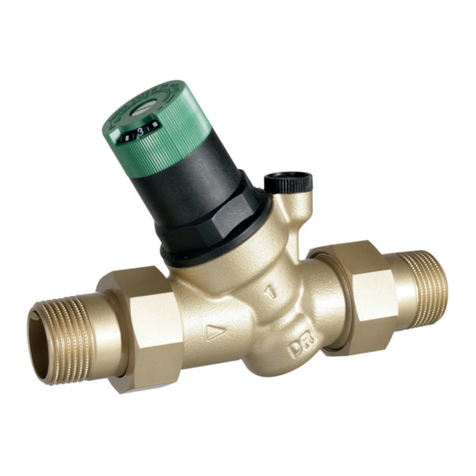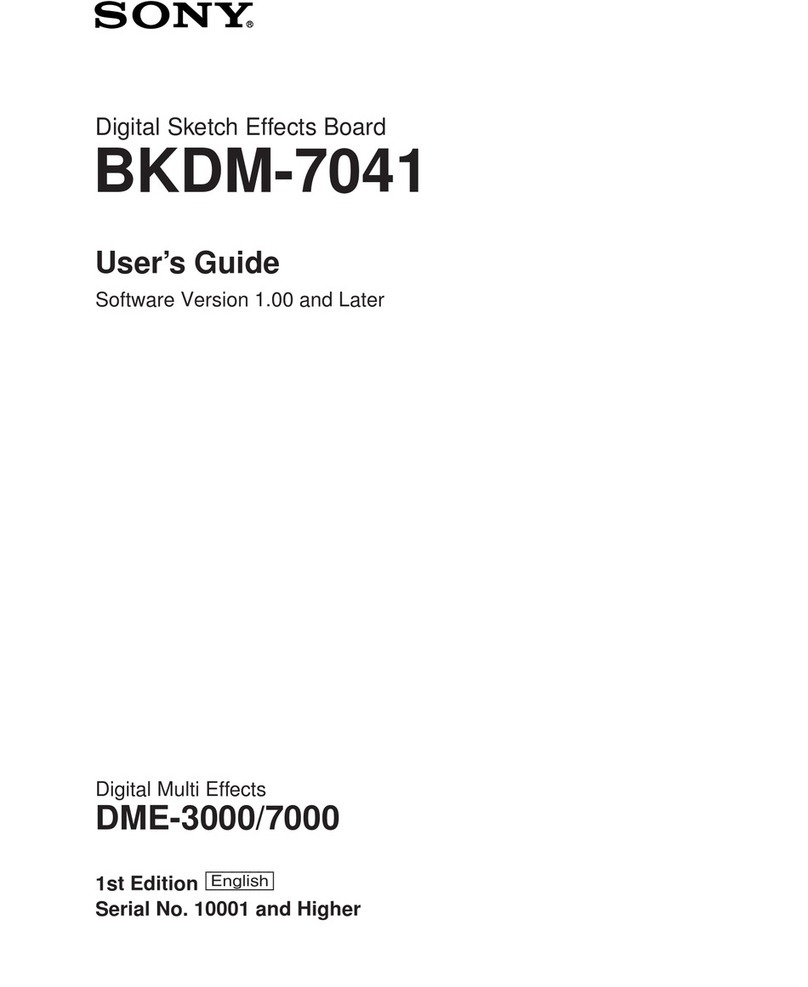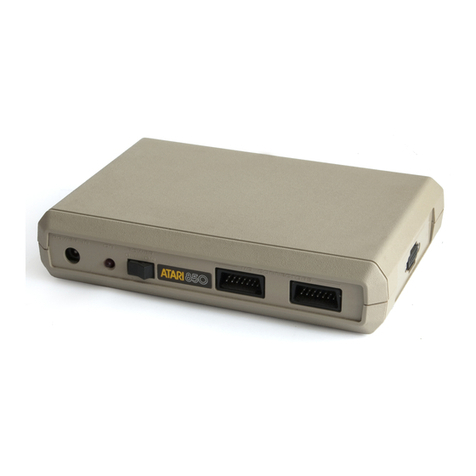Sercel SN388 User manual

SN388
INSTALLATION
Manual
Documentation No. 0311267 Issue : June 1999
Software version 8.4

In no event shall SERCEL be liable for incidental or consequential
damages or related expenses resulting from the use of this product, or
arising out of or related to this manual or the information contained in it,
even if SERCEL has been advised, or knew or should have known of the
possibility of such damages.
The information in this manual is believed to be accurate and reliable.
However, SERCEL reserves the right to make changes to its products or
specifications at any time, without notice, in order to improve design or
performance and to supply the best possible product.

TABLE OF CONTENTS
0311267 Issue : May 1999
i
9. TABLE OF CONTENTS
9.1
TABLE OF CONTENTS
1. INTRODUCTION ...........................................................................................................1-1
1.1 OVERVIEW....................................................................................................................1-1
1.2 GENERAL DESCRIPTION .................................................................................................1-1
1.3 CENTRAL CONTROL UNIT (CCU) ............................................................................. 1-2
1.4 FIELD ELECTRONICS................................................................................................1-9
2. HARDWARE INSTALLATION.......................................................................................2-1
2.1 POWER REQUIREMENTS.........................................................................................2-1
2.2 MOUNTING DIMENSIONS (CAB-MOUNT) ................................................................. 2-1
2.3 CONNECTIONS........................................................................................................ 2-13
2.4 POWER-UP...............................................................................................................2-26
3. SOFTWARE INSTALLATION OR RE-INSTALLATION.................................................3-1
3.1 SOLARIS INSTALLATION OR RE-INSTALLATION.................................................... 3-1
3.2 YEAR 2000 PATCH................................................................................................... 3-11
3.3 SERCEL SOFTWARE CDROM INSTALLATION (SN388, HCI, PS) ......................... 3-12
3.4 PROCESSING SUPPORT (PS) SOFTWARE PACKAGE INSTALLATION...............3-13
3.5 VQC SOFTWARE PACKAGE INSTALLATION......................................................... 3-14
3.6 GETTING STARTED................................................................................................. 3-15
3.7 STARTUP CONFIGURATION................................................................................... 3-16
3.8 POWER-OFF ............................................................................................................3-17
3.9 IF YOU ARE NEW TO WINDOWING SYSTEMS......................................................3-18
3.10 IF SN 388 SOFTWARE IS SUPPLIED TO YOU ON CARTRIDGES.......................3-19
4. FIELD EQUIPMENT LAYOUT.......................................................................................4-1
4.1 TYPICAL DEPLOYMENT EXAMPLES........................................................................4-1
4.2 MAXIMUM CABLE LENGTH .....................................................................................4-15
4.3 PSU MANAGEMENT.................................................................................................4-16
4.4 DETOURS.................................................................................................................4-18
4.5 SPECIFIC FEATURES OF B-TYPE AND UL-TYPE FIELD UNITS ...........................4-20

TABLE OF CONTENTS
0311267 Issue : May 1999
ii
5. MAINTENANCE.............................................................................................................5-1
5.1 CHANGING THE HARDWARE CONFIGURATION.....................................................5-1
5.2 ADJUSTING THE TCXO OSCILLATOR ON THE AXI BOARD................................... 5-1
5.3 SN 388 DAILY AND MONTHLY FIELD TESTS...........................................................5-2
5.4 RECONFIGURING THE HCI WITH A NEW TYPE OF PRINTER................................ 5-3
5.5 CHANGING CD488-B SCSI ADDRESS......................................................................5-5
5.6 ACCESSING THE AIR FILTER INSIDE THE CD488-B...............................................5-6
5.7 VERITAS V12 PLOTTER SETTINGS.......................................................................... 5-7
5.8 CD488-B POWER-ON TESTS....................................................................................5-8
5.9 CHANGING CD490-E SCSI ADDRESS ......................................................................5-8
5.10 DISPLAYING SCSI ADDRESS ON CD490-E OPERATOR PANEL.......................... 5-9
5.11 GS612 PLOTTER CONFIGURATION..................................................................... 5-10
5.12 CD490-E EQUIPPED WITH M2488E DRIVE.......................................................... 5-11
6. HOW TO ENTER ASCII DATA INTO THE SN388.........................................................6-1
6.1 OVERVIEW.................................................................................................................6-1
6.2 INTERFACING ............................................................................................................6-1
6.3 RS232 COMMUNICATIONS BETWEEN A TERMINAL AND AN SN388 ....................6-2
6.4 XDEV ADAPTOR ........................................................................................................6-3
7. MULTI-SCREEN & X-TERMINAL INSTALLATION ....................................................... 7-1
7.1 MULTI-SCREEN INSTALLATION................................................................................7-1
7.2 X-TERMINAL INSTALLATION.....................................................................................7-4
8. MULTI-MODULE INSTALLATION................................................................................. 8-1
8.1 OVERVIEW.................................................................................................................8-1
8.2 HARDWARE REQUIREMENTS OR CHANGES FOR MULTI-MODULE OPERATIONS8-3
8.3 SN388 MULTI-MODULE CONFIGURATIONS.............................................................8-5
8.4 TCXO ADJUSTMENT..................................................................................................8-9
8.5 DETAILED CONNECTION DIAGRAMS ......................................................................8-9
APPENDIX 1 APM & PAM PLUG PINOUT
APPENDIX 2 FIELD CABLES
APPENDIX 3 APM & PAM POWER-ON READOUT CODES
APPENDIX 4 SU POLARITY

0311390
SOFTWARE LICENCE AGREEMENT
SERCEL is willing to license the accompanying software package to you only upon the condition
that you accept all the terms contained in this licence agreement.
Read carefully the following terms and conditions before opening the software media package.
By opening the software media package you agree to the terms and conditions of this agreement.
I. SOFTWARE LICENCE
Software acquired under these terms and conditions is not sold, but merely licensed under the provisions of this Article I.
1. Licence Grant : Subject to the terms and conditions of this Agreement, Licensor grants to Licensee a personal, non
exclusive, non transferable license to use the object code version of the Software solely for licensee's own internal use.
2. Number And Type Of License : In consideration of payment of the licence fee, Licensor will provide Licensee with (a)
password(s) corresponding to the Software.
3. Use Of Software :
In support of its own internal use of the software, Licensee may only :
(a) Use the object code version of the Software,
(b) Copy the Software into machine readable or printed form for backup purposes only (2 copies maximum), provided
that all copies and partial copies include Licensor's copyright notices,
(c) Except with regard to training books and materials, copy the documentation as required for Licensee's own use,
provided that all copies shall include Licensor's copyright notices.
Except as expressly provided herein, Licensee may not :
(a) Copy, modify, merge, reverse engineer, reverse assemble, decompile, or disassemble the Software,
(b) Remove any labels or notices from the Software
(c) Distribute, publish, transfer, sublicense, or make the Software or program documentation available to other
organisations or persons,
(d) Create or attempt to create derivative works from the Software,
(e) Transfer the Software to another Hardware without approval of Licensor and payment of the applicable fee,
(f) Use the Software to violate the terms and conditions of any other software licensing agreement between Licensee and
any third parties.
If Licensee is located in a country which requires registration of software licences with government authorities, Licensee
shall be responsible for meeting all requirement of such registration.
II. PROPRIETARY RIGHTS
Licensee acknowledges that the Software is and remain the property of Licensor and contains trade secret information and
Know How proprietary to Licensor and that any breach of the provisions of this Article by Licensee would cause Licensor to
suffer immediate and irreparable harm. In the event of such breach, Licensor shall have, in addition to any and all remedies at
law, the right to an injunction, specific performance or other equitable relief.
Title to Software remains with Licensor at all times and no title or ownership of Software is transferred under this Agreement.
Licensee shall take no action that might impair any right, title or interest of Licensor in or to the Software. Licensee shall not
have any rights in or to any trademark or trade name owned by Licensor with respect to the Software.
Licensee shall not disclose the Software to any third party without Licensor's prior written agreement. Licensee shall inform
all its employees having access to the Software of the Confidential nature of the Software and their obligations with respect
thereto. Licensee shall ensure that its employees and any third party to whom disclosure is authorised strictly abide by the
confidentiality restrictions set forth in this Agreement.

0311390
III. WARRANTY
Software warranty period is ninety (90) days from the date of installation. Licensor warrants that Software was developed with
reasonable diligence and skill and that it substantially conforms to published documentation. Licensor's sole responsibility
under this warranty shall be to correct or replace any Software which does not so conform, provided that Licensee notifies
Licensor in writing during the warranty period. Licensee has had the opportunity to inspect Software : except as expressly
provided above, Software is deemed to be accepted "AS IS" without further warranty.
The warranty does not cover, and Licensor shall not be responsible for any failure or defect and resulting damage caused by
installation or use of Software not furnished by Licensor, accident (including damage during shipment), neglect, misuse or
abuse, or exposure to conditions beyond the environmental power and operating constraints specified by Licensor. The
warranty does not cover defects or failure resulting from modification or installation by someone other than Licensor or its
authorised representative.
IV. PATENTS AND COPYRIGHTS
Licensor shall defend, at its expense, any claim or suit brought against Licensee alleging that Software infringes upon a patent,
copyright or other proprietary right, and shall pay all costs and damages finally awarded, provided that Licensor is given
prompt written notice of such claim, reasonable information and assistance, and sole authority to defend or settle the claim. In
the defence or settlement of the claim, Licensor may obtain for Licensee the right to continue using Software, replace or
modify Software (without substantially changing the original functions of Software) so that it becomes non-infringing, or, if
such remedies are not reasonably available, grant Licensee a refund for Software (net of reasonable depreciation) upon its
return. Licensor shall not have any liability if the infringement is based upon modifications of Software or the use or sale of
Software in combination with products not furnished by Licensor.
V. LIMITATION OF LIABILITY
Except as expressly set forth herein, there are no representations or warranties by Licensor, expressed or implied, including
but not limited to implied warranties of merchantability and fitness for a particular purpose. Licensor does not warrant that the
operation of Software shall be uninterrupted or error free, that the functions contained in the Software shall meet Licensee's
requirements or operate in the combinations selected by Licensee, or that every error or defect may be corrected pursuant to
the warranty or maintenance services. In no event will Licensor or its suppliers be liable for indirect, consequential, incidental,
punitive, special or exemplary damages (including loss of data, production, profits or use of hardware) to Licensee or any other
party. Under no circumstances will Licensor or its suppliers be liable for damages exceeding the amount of the licence fee paid
for Software to Licensor by Licensee. These limitations will apply regardless of the form of action, whether in contract or tort.
VI. TERMINATION
Licensee may terminate the Agreement at any time. Licensor may terminate the Agreement if Licensee fails to comply with the
terms and conditions thereof, provided Licensee has been given ten (10) days notice prior to termination, during which
Licensee has failed to cure the breach to Licensor's reasonable satisfaction. Upon termination, Licensee shall return to
Licensor all Software and copies thereof, including merged portions in any form, or provide written confirmation that Software
and such copies/portions have been destroyed. Termination is without prejudice to any other rights or remedies available to
Licensor at contract or at law.
Termination does not relieve Licensee of its obligation to pay the licence fee(s), the maintenance fees up to and including the
running period, as well as any other charges and fees due to Licensor. In addition, if any act by Licensee causes the
cancellation or rescheduling of Licensee's order, Licensee shall reimburse Licensor for the resultant costs incurred.
VII. GENERAL
Except for the obligation of payment, neither party shall be liable for non-performance caused by circumstances beyond their
reasonable control including, but not limited to, work stoppages, delay in transportation, delay in delivery by vendors, fire,
civil disobedience, war or acts of nature.
Except as provided herein, this Agreement constitutes the entire agreement between the parties with respect to the subject
matter hereof, and shall supersede and cancel all prior agreements or understandings either oral or written, including any
different, conflicting or additional terms and conditions which may appear on any contract, purchase order or form submitted
by Licensee.
During the term of this Agreement, the relationship of Licensor to Licensee is that of an independent contractor only.
This Agreement shall be governed, construed and interpreted in accordance with the laws of France. The Tribunal du
Commerce of Nantes (Trade Court of Nantes) France, shall have the exclusive jurisdiction to resolve any dispute or
disagreement between the parties relating to this Agreement.
All notices, authorisations and requests in connection with this Agreement shall be in writing and shall be deemed given on
the day they are received by hand, first class mail, "FAX" or "TELEX" at the addresses herein or thereafter notified by either
party to the other in writing.

INTRODUCTION
Overview
0311267 Issue : April 1998
1-1
1. INTRODUCTION
1.1 Overview
This manual contains installation information, a few instructions for the operator to
get started, and reference information that will help you select an SN 388
configuration tailored to your needs. General reference information (SEGD format,
specifications, etc.) is contained in the REFERENCE Manual.
Operating instructions are not provided in the form of a traditional manual, as any
help information needed appears direct on-screen and is just one click away at all
times once the system is started.
For detailed information on peripherals (printer, camera, etc.) see the respective
manufacturers' documentation.
1.2 General description
The SN 388 is a large capacity, high resolution system designed for land seismic
data acquisition. It derives its high reliability and versatility from SERCEL's
unequalled experience in cable telemetry systems and from the use of the most
advanced electronics and workstation technology.
The SN 388 is composed of a Central Control Unit (CCU) and electronic field
equipment (SU, CSU, PSU) interconnected by electric cables. The CCU consists of
a Human Computer Interface (HCI workstation) and one or more 1200-channel
acquisition modules :
- PAM : Portable Acquisition Module
- APM : Acquisition and Processing Module
SUs, performing data acquisition, are remotely powered through the
interconnecting cable, from standard 12 VDC batteries, evenly distributed along the
spread, via PSUs.

INTRODUCTION
CENTRAL CONTROL UNIT (CCU)
0311267 Issue : April 1998
1-2
2400 CH
MODULE
PRINTER
X
TERMINAL
WORK
STATION
PLOTTER
TAPE OR
CARTRIDGE
DRIVE
HCI
CENTRAL CONTROL UNIT BLOCK DIAGRAM
2400 CH
MODULE
1 to 16
2400 CH
MODULE
1.3 CENTRAL CONTROL UNIT (CCU)
The SN 388 Central Control Unit hardware, relying on the UNIXoperating system
and computing network architecture offers maximum expandability and flexibility.
•The HUMAN COMPUTER INTERFACE (HCI) is dedicated to system
interaction with the operator, through a fast and comprehensive software
package specially designed to ease geophysical operations in the field.
•Data acquisition and optional correlation and stack processing are carried
out by one or more 1200 CH MODULES (up to 16) to reach the maximum
capacity of 19200 channels at 2-ms sample rate or equivalent data rate
capacity.
UNIX, ETHERNET are registered trademarks of UNIX Systems Laboratories Inc, Xerox
Corporation.

INTRODUCTION
CENTRAL CONTROL UNIT (CCU)
0311267 Issue : April 1998
1-3
Expandable and powerful Ethernetdata network is used to connect the
HCI to the various modules.
The raw or processed data are recorded on magnetic media, either a reel
or a cartridge drive.
Digital filtering may be performed on the recorded or playback data, to
display notch- or bandpass-filtered seismic traces on a digital camera.
•Peripheral equipment such as a printer or digital camera can be connected
to the CCU to provide data, operation log and parameter hard copy. The
system has the capability to display a noise monitor of the complete
spread in real time, without any delay or missing data due to segmented
processing.
1.3.1 HUMAN COMPUTER INTERFACE (HCI)
The operator controls the complete system through a HUMAN COMPUTER
INTERFACE (HCI) based on a workstation with a high resolution colour monitor, a
keyboard and a mouse. A multi-windowing system allowing flexible and versatile
screen extensions gives immediate access to all parameter settings.
The major functions of HCI software include :
-Normal operation control (user-friendly parameter setup, update, and
display for the entire system, including all VE416/VE432 Vibrator
electronics parameters).
-Permanent high-resolution graphic display of the complete field electronics
connected to the CCU, including ancillary units and the shot point. The
graphic display allows interactive graphic selection of the spread, and
energy monitoring prior to and during the shot.
-Easy to set up and update shotpoint planning.
-Preplanning In/Out capability : SN 388 parameter script files can be saved
to and/or loaded from an auxiliary computer. Compatibility with a
standalone processing support converter is provided.
-Neat display of system activity.
-Display, analysis and storage of spread test results.
-Automatic log of observer report data.
-Graphic display of planned source and receiver positions, possibly
superimposed on a digitized map and/or a graticule. Real-time tracking of
actual vibrator positions and centre of gravity of actual source position
(with VE416/VE432 and GPS).
-Source and Receiver attributes (e.g. vibrator peak force, geophone
impedance etc.) can be colour-coded and displayed geographically.
UNIX, ETHERNET are registered trademarks of UNIX Systems Laboratories Inc, Xerox Corporation

INTRODUCTION
CENTRAL CONTROL UNIT (CCU)
0311267 Issue : April 1998
1-4
-Service Vehicle Tracking function. If equipped with MRU units, service
vehicles appear on the survey map. They can send an alarm code to the
base station and receive messages (e.g. a waypoint) from it. The trackline
and identification of each tracked vehicle can be plotted on the survey
map.
-ON-LINE real-time VQC processing. Traces can be input to the VQC
application as soon as they are acquired and processed, so you can
monitor the phase or distortion or force of the vibrator source signal (on
auxiliary traces) in real time.
-Printout of all parameters, and hard copy of daily production report (easy
to customize), using a standard line printer attached to the HCI.
-Automatic CCU acceptance tests.
-Graphical VE416/VE432 QC interface.
-Online help information.
In portable operations, where weight and volume are critical, the HCI is configured
as a fully portable laptop workstation with a single monitor.
For truckmounted operations, with the X-windowsystem , additional X-terminals
may be connected to the desktop configuration to offer comfortable and permanent
display of multiple windows for system parameter viewing or entry.
For vibroseis operations, the standard HCI software has the capability to perform
complete remote control of the VE416/VE432 vibrator electronics parameters.
Parameter entry is done on the HCI, which emulates the complete initialization
software of the VE416/VE432 Digital Pilot Generator. During operations, the
VE416/VE432 vibrator status information is received by the HCI for storage and
analysis. For other types of vibrator control systems, remote control is performed
through the necessary handshake signals.
1.3.2 ACQUISITION AND PROCESSING MODULES
(APM/PAM)
The parameters entered through the HCI are downloaded into the Acquisition and
Processing Module (APM) or Portable Acquisition Module (PAM).
The major functions performed by both the APM and PAM include :
-interfacing with the field electronics,
-generating the Firing Order and sensing the Time Break,
-seismic line management and control,
-auxiliary line control,
-collecting the data from the field electronics,
-formatting the data to and from the tape transport and to the digital
camera,
-collecting system status data to be returned to the HCI.
TM :Xwindow is a trademark of Massachusetts Institute of Technology.

INTRODUCTION
CENTRAL CONTROL UNIT (CCU)
0311267 Issue : April 1998
1-5
APM functions also include :
-noise editing (Zeroing/Clipping/Diversity Stack)
-correlation and stacking.
The following boards are used in both the APM and PAM :
LIO :Line Input/Output interface
LCP :Line Controller Processor
MPM :Main Process Memory
AXC :Auxiliary Line Controller
TTC :Tape Transport Controller
TTS :SCSI Tape Transport controller
Two more boards are used in the APM :
NEP :Noise Elimination Processor
FTP :Fourier Transform Processor
Configuration Boards
AXC LIO LCP MPM NEP FTP TTC or TTS
1200 ch PAM 1 1 1 1
(MM16-1) - - 1
480/30 ch APM 1 1 1 3
(MM16-1) 1 1 1
600 ch APM 1 1 1 3
(MM16) 1 1 1
1200 ch APM 1 1 1 3
(MM16) 2 2 1
Table 1-1 SN 388 PAM/APM board configurations
Every effort has been made in designing the hardware of the PAM and APM to
enhance performance while reducing size :
•Zero dead time operation (unless limited by tape drive performance). The
1200-channel PAM and APM modules, organized around a pipe-line
architecture, achieve such a speed that vibrator drivers and dynamite
shooters will not need to wait for the acquisition system to be ready.

INTRODUCTION
CENTRAL CONTROL UNIT (CCU)
0311267 Issue : April 1998
1-6

INTRODUCTION
CENTRAL CONTROL UNIT (CCU)
0311267 Issue : April 1998
1-7

INTRODUCTION
CENTRAL CONTROL UNIT (CCU)
0311267 Issue : April 1998
1-8
•Minimum weight and volume.
For portable dynamite operations, the PAM houses all necessary
electronics to acquire 1200 Channels at 2-ms sample rate, within a 22-kg
unit (0.088 m3).
The APM which, in addition to acquisition itself, performs correlation and
stack operations, is packaged within a single 37-kg unit (0.111 m3), for
configurations up to 1200 Channels at 2-ms sample rate.
To facilitate configuration changes and equipment maintenance, the five
boards dedicated to acquisition and recording are identical and fully
interchangeable between the PAM and APM modules.
1.3.3 MULTI-MODULE INTERFACE
To extend the capacity of the system, an MMI-4 unit is used, allowing up to four
APM or PAM acquisition modules to be connected together (increasing the
capacity up to 4800 channels).
An MMC-4 unit is also available, to attach a camera to up to four acquisition
modules.
1.3.4 PERIPHERAL EQUIPMENT
•• Tape drives
Reel or cartridge tapes can be used as magnetic media on SN 388 systems, for
recording in demultiplexed format :
-the MS8TT or SS8TT tape drive provides recording on a widely used 6250
b.p.i. 1/2 inch tape reel, housed in two waterproof and portable units,
specially designed for harsh and portable seismic environments.
-the CD 480 or 488 CARTRIDGE drive makes it possible to record a 3480
IBM compatible cartridge tape, directly in the field. For dual drive
recording, the standard software provides alternate or simultaneous
recording without any additional devices.
For very large configurations, parallel multiple drive recording makes it
possible to override the delay which may be induced by the speed
limitation of a single drive.
•• Digital camera
An external digital camera is used to generate a paper record of the acquired
seismic data, either in read-after-write∗or in play-back mode.
∗with MS8TT tape drive.

INTRODUCTION
FIELD ELECTRONICS
0311267 Issue : April 1998
1-9
1.4 FIELD ELECTRONICS
The SN 388 field electronic equipment consists of units which are interconnected
by electric cables. All field units are packaged into a totally waterproof aluminium
casting. They have been designed to fully operate in the temperature range of -40
to + 70° C.
The SN 388 SU's are manufactured with custom-designed integrated circuits. This
offers the user field upgradable packaging which contributes to the maximum
flexibility at the lowest cost, and enhances the performance of the system :
-1 channel per SU for high-resolution surveys,
-3 channels per SU for 3-component high-resolution surveys,
-6 channels per SU for large 3-D surveys.
SU-1
SU-1
SU-1
SU-3
SU-3
SU-3
SU-6 SU-6

INTRODUCTION
FIELD ELECTRONICS
0311267 Issue : April 1998
1-10
1.4.1 24-BIT STATION UNIT (SU)
SN 388 advanced technology reduces the complete seismic channel with its 24-bit
stream A/D converter to a plug-in module the size of a matchbox.
The technology allowed the design of an ultra-compact SU which is field
upgradable by plugging in (or out) modules. This versatile SU covers all the various
kinds of seismic acquisitions, at the optimum cost. Within the same casting, by
installing the proper number of seismic channel modules, the user can select the
desirable configuration :
-1-channel SU
-3-channel SU
-6-channel SU
To prevent any incorrect geophone string connection, the spread in operation must
be composed of homogeneous-type SUs.
However, to add flexibility for P-wave acquisition, the three-channel SU can be
used as a one-channel SU.
•• No battery pack
The SN 388 does not require any battery pack to be associated with each SU. With
the SN 388's extremely low power consumption (240 mW per channel) the number
of batteries required along a line is minimum.
For portable or heliportable operations the SN 388 station unit comes with an
unprecedented ratio of 650 g per channel.
•• Analog-filter-free and ideal seismic response
Taking advantage of the large dynamic range and the very low distortion of the SN
388's 24-bit-stream A/D converter, the seismic channels are free from any analog
filters. With this design, undesirable phase shifts and temperature drifts due to
analog components are suppressed to obtain the ideal seismic response with
either minimum or linear phase shift. As a result, filter settings at the field level are
no longer required, which precludes any unrecoverable error arising from incorrect
settings. (Sophisticated filtering is preferable where it is non-destructive, that is at
the playback or processing stage).
•• 24-bit built-in test generator
A 24-bit ultra-low distortion built-in test generator is integrated into every SU, in
order to perform a remote check of the complete acquisition performance, at full
specification, from the CCU without any external oscillator.

INTRODUCTION
FIELD ELECTRONICS
0311267 Issue : April 1998
1-11
1.4.2 CROSSING STATION UNIT
A Crossing Station Unit (CSU) is required to connect each line to the previous line
or to the CCU module. A low-attenuation cable is used for this transverse
connection, providing a digital link over a maximum distance of 600 m without a
repeater.
A 12 V standard battery is connected to each CSU to power its internal circuits as
well as the near SU's in the relevant spread line (see also PSU).
BATT
SU SU SU PSUCSU
BATT
BATT
SU SU SU PSU
CSU
BATT
CCU
1.4.3 POWER STATION UNIT
A Power Station Unit (PSU) is required to regenerate the DC voltage distributed
over the line cables to provide power to the SU's. A 12 V standard battery is
connected to each PSU.
The number of PSUs in operation depends on the SU configuration ; one PSU is
required :
-every 40 channels with the 1-channel SU,
-every 90 channels with the 3-channel SU,
-every 48 channels with the 6-channel SU.
The CSU acts as a PSU for the line in which it is inserted.

INTRODUCTION
FIELD ELECTRONICS
0311267 Issue : April 1998
1-12
1.4.4 BU-6 (Bay-Cable unit)
To extend the versatility of the SN 388 telemetry system, a BAY-CABLE
ACQUISITION UNIT (BU-6) is available for transition zones and shallow water
operations. The BU-6 package which houses 6 seismic channels including the
SN 388 proprietary 24-bit A/D converter, is directly mounted on a multi-conductor
cable incorporating a strength member, particularly designed for shallow or tidal
areas, for which multiple windings and unwindings on a small diameter winch are
required. The BU-6 is fully controlled by the SN 388 CENTRAL CONTROL UNIT.
For safety operations, within marine environment, the BU-6 is operating under a
±24 V DC voltage which is supplied by the central unit through the interconnecting
bay cables. No immersed power supplies are required.
For mixed-operation land and transition zones, the BU-6 is fully compatible and can
be mixed with the SN 388 standard 6 channel Station Unit (SU-6). In that type of
operations, the land section is powered by the 12 VDC batteries associated with
the SN 388 PSUs.
1.4.5 MICRO WAVE LINK
The SN388 Micro-Wave Link (MWL) is used to replace an SN388 extension cable
in areas where cable laying is made difficult by field obstacles such as rivers, cliffs,
canyons, etc.
It provides a bi-directional radio link relaying the telemetry data, the field unit power
control and the telephone.
A ± 24 VDC power supply is also included to power up the SUs connected at either
end of the link.
1.4.6 CABLES
•• Line cables
-for the single- or 3-channel SU, the line cable provides digital transmission
and remote power. The receiver group is directly connected to the SU
socket, to achieve the highest-resolution performance,
-for the 6-channel SU, the functions of the line cable include digital
transmission, remote power, and acquisition of 6 receiver groups. The
receiver groups are connected to the cable take-outs.
•• Transverse
To connect the lines to the CCU, transverse cables are used (see CSU), between
any two successive CSUs and between the nearest CSU and the 1200-CH
MODULE.
•• Detour
When a detour is needed along a seismic line, an extension cable is laid down and
a PSU is required at each end of the extension cable.

INTRODUCTION
FIELD ELECTRONICS
0311267 Issue : April 1998
1-13
1.4.7 LINE TESTER
For large 3-D operations, in order to check the lines deployed ahead of the spread,
a LINE TESTER (LT 388) makes is possible to perform transmission and receiver
tests on a complete connected line, without CCU being needed.
SU LT 388
SU
1.4.8 QUICK TESTER
When plugged into the LINE connector of any field unit, the SN 388 Quick Tester
allows quick checking of the line voltage (VLL) and of the performance of a remote
control signal (PWCT)
NOTE : The VLL voltage on the AUXILIARY line (24 V instead of 48 V) cannot be
tested with the Quick Tester.
Quick tester

INTRODUCTION
FIELD ELECTRONICS
0311267 Issue : April 1998
1-14
1.4.9 TEST AND MAINTENANCE SYSTEM
The TEST AND MAINTENANCE SYSTEM (TMS 388) is designed for testing or
troubleshooting all types of SN 388 field units.
The TMS 388 is composed of a PC micro computer, a test unit (TMU), a cable unit
(TCU) used to simulate line cables, and a test signal generator (TGU).
TGU
Unit under test
PC
TCU
TMU TMS 388
J1 J2 J3 J4
6 1
LINE 1 LINE 2 INPUT/
BATT XDEV
Table of contents
Other Sercel Control Unit manuals
Popular Control Unit manuals by other brands

ADTRAN
ADTRAN Total Access 300 Series manual

Tews Technologies
Tews Technologies TIP866-TM-20 user manual
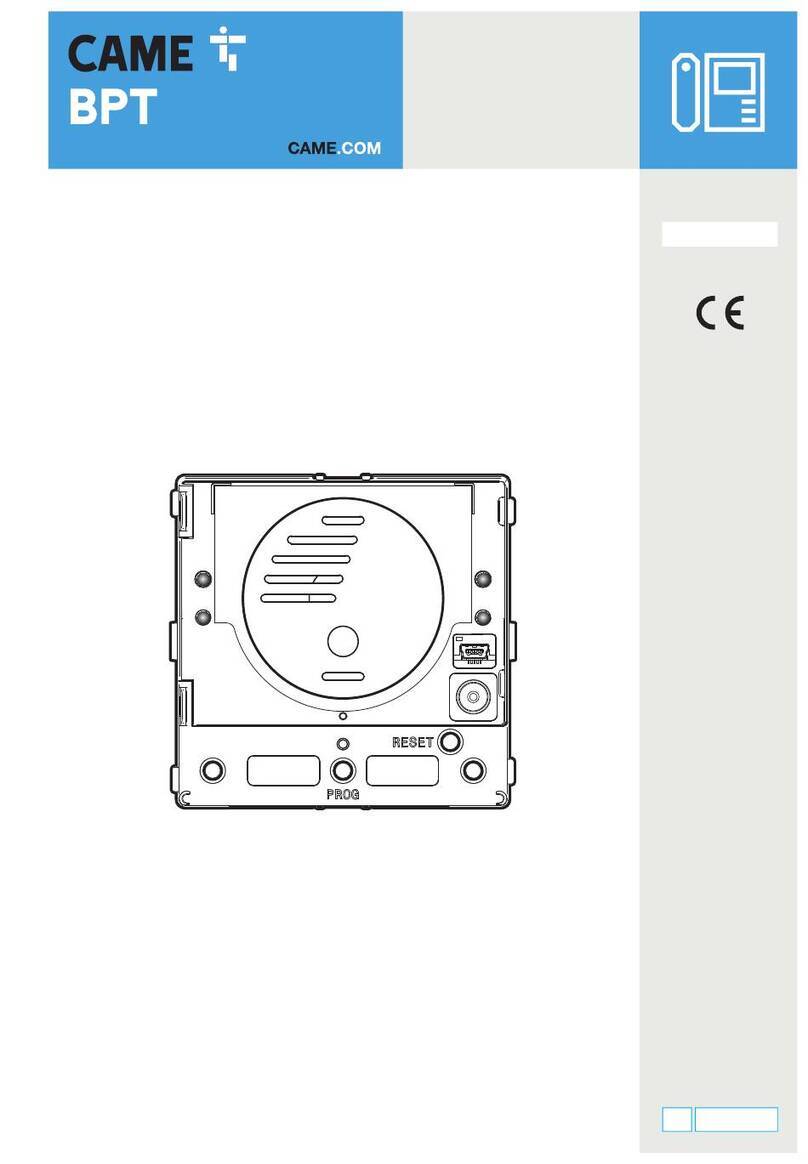
CAME BPT
CAME BPT MTMA/GSM Programming manual

Wilo
Wilo Wilo-Control EC-L Installation and operating instructions

Elk Products
Elk Products ELK-110 quick start guide

Warren rupp
Warren rupp Sandpiper HD20F Service & operating manual

